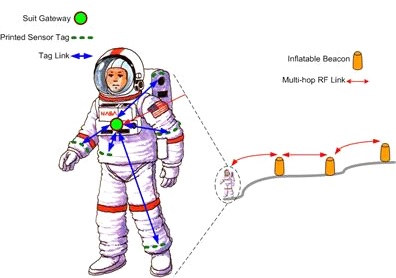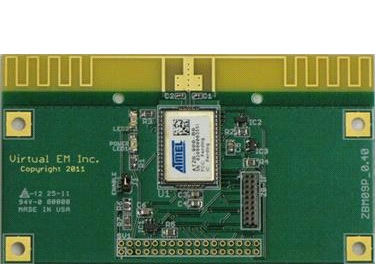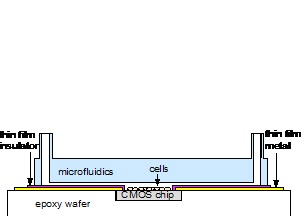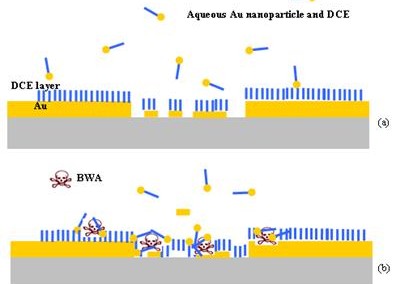Wireless Sensor Networks
Aptamers for Detecting Biological Warfare Agents (BWAs)
DESCRIPTION:
Under an Air Force Phase I SBIR project (Contract No. FA9550-07-C-0154), in collaboration with the Michigan Nanotechnology Institute for Medicine and Biological Sciences (MNIMBS) of the University of Michigan, Virtual EM has developed an aptamer-based chemical sensor for detecting BWAs, and in particular anthrax. Figure 1 shows a schematic diagram of the chemical sensor (or switch) and its operation. The substrate material is Silicon (Si) while the electrodes are made of Gold (Au) and the spacing between them varies with the desired sensitivity. A monolayer of DNA capture elements will be bound to the Au through a thiol linkage. In order to increase the switch sensitivity, a discontinuous Au film will be placed between the electrodes. This film will also have aptamers (DNA capture elements) adsorbed on it.
The second part of the system is Au nanoparticles conjugated to aptamers (DNA capture elements). These particles will be introduced into the aqueous fluid to be tested. In the absence of a BWA, it is important that they do not interact with the surface. When a BWA is introduced into the system, it will act as a binder to pull the nanoparticles toward the sensor surface. The measured electrical conductivity between the electrodes is confirmed to be a very sensitive detector for the addition of Au nanoparticles. Consequently, upon the addition of BWA into the testing solution, the gold particles will flood the channels, lowering the conductivity, and hence triggering the detection instance.
SBIR TOPIC #: AF07-T016 (Phase I)





